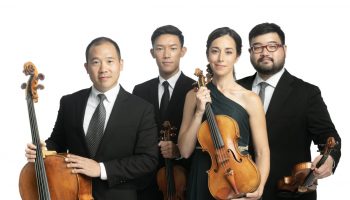
In the centerpiece of Chautauqua’s classical music season, Music Director and Principal Symphonic Conductor Rossen Milanov said, Mahler’s “Resurrection” transcends Earth, inviting the audience to grapple with the complex questions of existence.
At 8:15 p.m. Saturday in the Amphitheater, the Chautauqua Symphony Orchestra, the Music School Festival Orchestra, the Buffalo Philharmonic Chorus and two Chautauqua Opera Company Studio Artists — soprano Emily Finke and mezzo-soprano Rosamund Dyer — will come together for a truly powerful performance.
The largest piece of the season — not only because of its sheer size but also due to the importance and scope of the philosophical and humanistic ideas at the heart of it, Milanov said — “Resurrection” is bound to strike a chord with the audience’s base humanity.
When Mahler initially began composing his Symphony No. 2 in C Minor, “Resurrection,” in 1888, he posed the questions, “Why have you lived?” and “Why have you suffered?” Mahler waited a year to answer such existential questions in composing the second and third movement, then another year to write the finale.
Recognizing the composition’s impact, Mahler himself wrote to a friend in 1895 saying, “the effect is so great that one cannot describe it. If I were to say what I think of this great work, it would sound too arrogant in a letter.”
An 80-minute long feat, the two orchestras play together for three movements before being joined by mezzo-soprano Dyer. Because Dyer doesn’t sing until the fourth movement, in order to practice this technical feat, she has trained since December by warming up, sitting and watching a 45-minute TV show, and Dyer, who has been singing opera since 16 years old, feels the fourth movement, “Urlicht,” as a powerful and humbling prayer.
“Urlicht” is a poem set to music, in which Mahler “expresses the desire for the release from the agony of being a human, from the suffering of life in order to be ascended into the majesty of heaven,” Dyer said. “Then right after you finish this contemplative, beautiful, majestic moment of peace and hope — the apocalypse of ‘Movement Five’ starts.”
Coming in for the fifth and final movement, the Buffalo Philharmonic Chorus sings “rise again” in response to Mahler’s initial questioning. With about 150 instrumentalists total and upwards of 140 chorus members, combined with two soloists, some of the musicians will even be offstage in a brass group led by 2025 David Effron Conducting Fellow Hannah Schendel. That sheer wall of sound will envelop the listeners.
Adam Luebke, music director of the Buffalo Philharmonic Chorus, particularly enjoys the expansive and rich sound of the music through Mahler’s articulation of the fulfillment of the human experience and what it means to be alive beyond the actualization of oneself.
One of the phrases the chorus sings out in a hymn-like moment is “what was created must perish. What has perished must rise again,” Luebke said. Though the journey to definitively answer why we suffer is multifaceted and subjective, Luebke feels that Mahler is saying “there is more beyond.”
“(Mahler is) optimistic,” Luebke said. “I think he’s saying that life is not in vain. There’s a thread of optimism, to be inspirational and live out one’s life to the fullest.”
With monumental themes and technical challenges, many artists wait their whole life to perform in “Resurrection,” Luebke pointed out. Dyer feels that to perform the piece with an orchestra at this stage of her career is an immense privilege.
When Finke learned that she had been selected as a Studio Artist in this year’s Chautauqua Opera cohort, she also learned she was chosen to perform “Resurrection.” She described the experience as a humbling one.
“It’s such a feat by everyone involved, and I feel this joy of being present,” Finke said. “Witnessing this feat is an inspiration.”
Finke and Dyer sing together with the chorus in the last movement for that overwhelming integration of all voices. For Finke, the question of why we suffer amounts to “it’s all worth it in the end.” With the unity of all artists, the conclusion is “not careful in any way — it’s bold and loud.”
Dyer believes the answer amounts to finding meaning in suffering.
“There is value in what is hoped for, what is worked for and what you struggle for. That is depicted in the music,” Dyer said. “There is rhythmic struggle, dissonance in the music and fighting of overtaking themes. And then, because you have worked so hard, you are worthy of heaven. You are worthy of goodness. You have goodness within you.”
The vocal projection required to fill the entire Amp while maintaining excellent sound is an incredible endeavor.
“The whole sonic atmosphere is just overwhelming and profound. It’s really epic and spine-tingling and soul-journeying; it’s a really powerful experience to be a part of,” Luebke said. “When you’re singing as part of that, you’re truly giving your own self into that moment and into that sound.”




